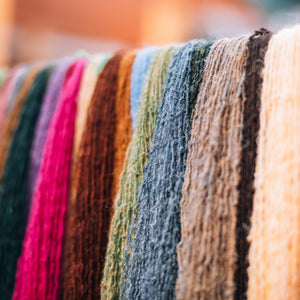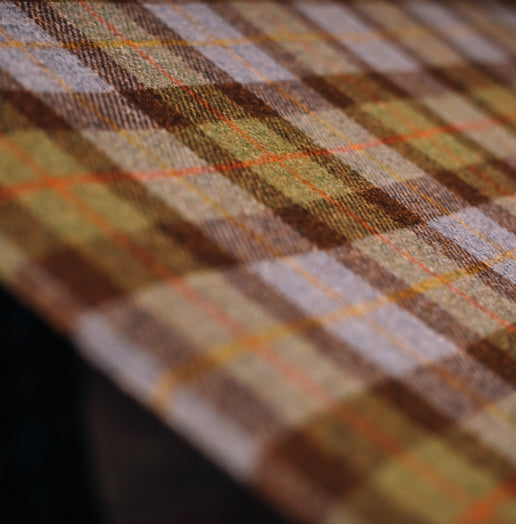
IF the Hattersley weaving loom is an icon of the heritage days of Harris Tweed, then so is the spinning wheel.
It has been replaced by modern machinery long since, but once upon a time this traditional piece of equipment was completely essential to the making of Harris Tweed. During the spinning stage the loosely formed wool was — and still is — turned into a workable single ply yarn strong enough for weaving.
The old spinning process has been beautifully captured by Edinburgh artist Davy Macdonald in one of the eight paintings in his recent collection, ‘Harris Tweed — An Inspiring Heritage’. Entitled Spinning the Yarn, the picture (shown below) was inspired by famous Harris weaver Marion Campbell at her Saxony spinning wheel.
In those days, spinning wool was very labour intensive but there was never anything mundane about the spinning wheel itself, which has featured in fairy tales and folklore the world over for hundreds of years.
There is no such mystique about the ‘new’ spinning frame machinery — introduced to the islands when the mills were established last century — but the creation of a workable yarn remains a kind of magic
During the pre-spinning process of carding, the wool is rubbed to give the fibres just enough structure to withstand the stress of being spun.
These ‘slubbings’ are moved from the carding machine to the spinning frame on spools and can easily be pulled apart as the threads are only loosely organised. That all changes during the spinning process, though.
As many spools of wool are spun at the same time, the trick is ensuring consistency of weight and thickness across them all.
Harris Tweed Hebrides produce two different yarn weights, which are then used for the different types of Harris Tweed cloth produced by the company.
During set-up, the spools of wool are placed at the top of the vertical machine and the threads are led down through a part of the machine called the ‘twister’ and then onto the ‘cops’ for spinning.
Here, they are guided into position by small plastic clips called ‘travellers’. These unprepossessing clips really do punch above their weight — for they influence the heaviness of the eventual yarn — allowing the formation of a solid yarn package onto each of the plastic tubes at the bottom of the spinning frame.
The heavier travellers, coloured green, result in a heavier yarn being produced, as they ease out the wool while it is being spun on the cop. The yellow travellers are used when the wool is gauged to be too light and the red travellers when it is just right.
The weight of the yarn can also be adjusted by changing the settings on the machine’s sizing wheel but the clips give that little bit of extra control.
An array of drums and rollers keeps everything moving along but there can be as many as 16 spools per frame spinning at once on each of the five spinning frames in the Harris Tweed Hebrides mill.
The spinners have to keep the frame going at the right speed and under the right tension in order to get good yarn at the end.
John Mackay, the Spinning Manager at the mill and a spinner for 40 years in the UK textile industry, said: “The challenge is making sure the size is roughly the same. If you’re too heavy in one set and too light in another set, it wouldn’t work on the tweeds.”
So, he said, “you size everything”.
This means taking the sizing stick, which measures exactly one yard, and taking off a total of 60 yards from different spools for weighing. If too heavy or too light, then changes need to be made.
At the end of spinning, the yarn — which has lengthened by around a third — is wound onto the distinctive bobbins which sit at the bottom of the spinning frame.
Here, the yarn waits to be taken to the yarn store and the warping frames, where the embryonic pattern of the tweed will be mapped out.

























